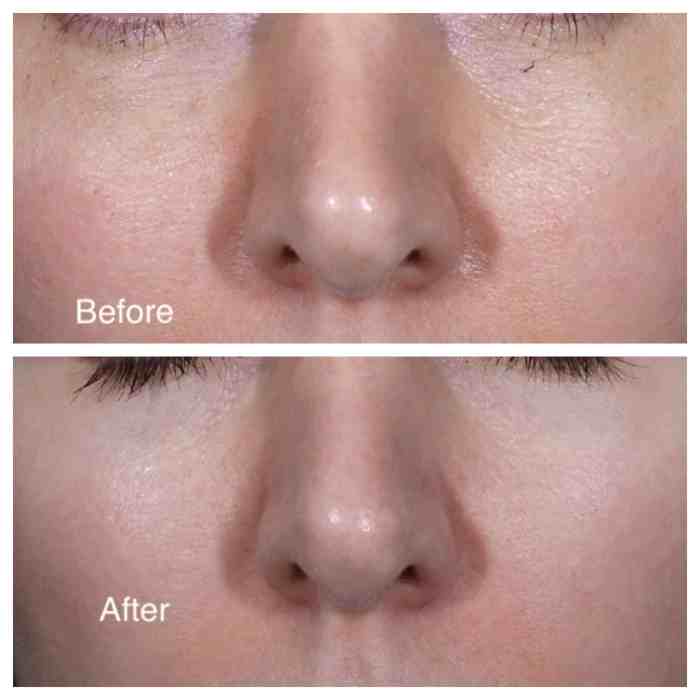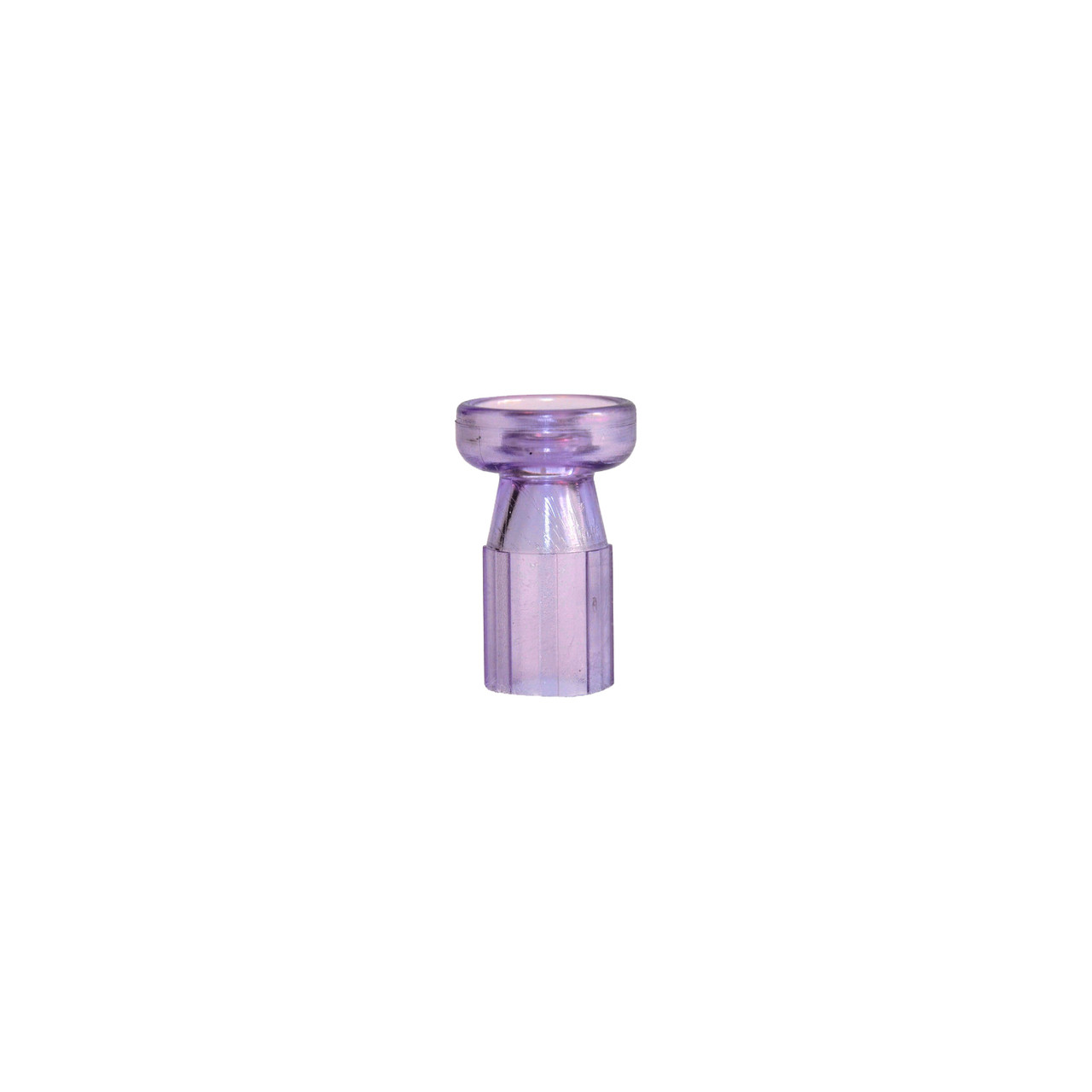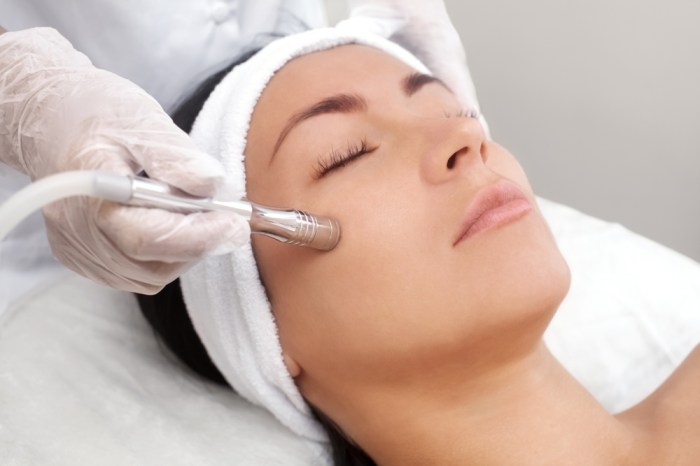What is a microderm infusion – Welcome to the world of microderm infusion, where skincare meets rejuvenation. This innovative treatment combines the power of microdermabrasion with the benefits of infusion to unveil a radiant and revitalized complexion. Embark on a journey of skin transformation as we delve into the intricacies of this groundbreaking technique.
Microdermabrasion gently exfoliates the skin’s surface, removing dead cells and impurities, while infusion nourishes the skin with essential nutrients and antioxidants. This dynamic duo works in harmony to address a wide range of skin concerns, from fine lines and wrinkles to hyperpigmentation and acne scars.
Microdermabrasion
Microdermabrasion is a minimally invasive skin resurfacing procedure that uses fine crystals or a diamond tip to gently exfoliate the top layer of skin.
A microderm infusion is a non-invasive skin treatment that uses a stream of fine crystals to gently exfoliate the skin. This helps to remove dead skin cells, improve circulation, and promote collagen production. If you’re looking for more information on this topic, you can check out the waves on a string answer key . It’s a great resource that provides detailed explanations and examples.
Getting back to microderm infusion, it’s a great way to improve the appearance of your skin and give it a healthy glow.
This helps to remove dead skin cells, improve skin texture, and stimulate collagen production. Microdermabrasion can be used to treat a variety of skin conditions, including acne, wrinkles, sun damage, and scars.
Types of Microdermabrasion
There are two main types of microdermabrasion:
- Crystal microdermabrasionuses fine crystals to exfoliate the skin.
- Diamond microdermabrasionuses a diamond tip to exfoliate the skin.
Diamond microdermabrasion is generally considered to be more effective than crystal microdermabrasion, but it can also be more expensive.
Microdermabrasion Devices
There are a variety of microdermabrasion devices available on the market.
- Home microdermabrasion devicesare designed for home use and are typically less expensive than professional devices.
- Professional microdermabrasion devicesare designed for use by trained professionals and are typically more powerful than home devices.
The type of microdermabrasion device that is best for you will depend on your individual needs and budget.
Infusion

Infusion, in the context of microdermabrasion, refers to the process of delivering a topical solution or serum into the skin during the treatment.
During infusion, a specialized device is used to create a gentle vacuum that lifts the skin and allows the solution to penetrate deeper into the skin’s layers.
Types of Solutions
The types of solutions used in infusion vary depending on the desired outcome of the treatment. Some common solutions include:
- Hydrating solutions: These solutions contain ingredients like hyaluronic acid and glycerin to help moisturize and plump the skin.
- Anti-aging solutions: These solutions often contain antioxidants and peptides to help reduce the appearance of fine lines and wrinkles.
- Brightening solutions: These solutions contain ingredients like vitamin C and kojic acid to help improve skin tone and reduce the appearance of hyperpigmentation.
Microderm Infusion Procedure: What Is A Microderm Infusion

A microderm infusion treatment combines microdermabrasion with infusion to exfoliate and hydrate the skin. Here’s a step-by-step procedure:
| Step | Pre-Treatment | Treatment | Post-Treatment |
|---|---|---|---|
| 1 | Cleanse and prep the skin | Use a diamond-tipped wand to exfoliate | Apply a hydrating serum or mask |
| 2 | Apply a numbing cream | Infuse the skin with a serum | Massage the skin to enhance absorption |
| 3 | Relax and let the serum penetrate | Remove the serum and apply sunscreen | Avoid sun exposure for 24 hours |
Benefits of Microderm Infusion

Microderm infusion offers numerous benefits for the skin, making it a popular choice for improving skin health and appearance. This treatment effectively exfoliates the skin, removes dead skin cells, and infuses the skin with essential nutrients and serums.The exfoliating action of microderm infusion helps to improve skin texture, revealing a smoother and more radiant complexion.
It also promotes cell turnover, leading to the production of new collagen and elastin, which improves skin elasticity and reduces the appearance of fine lines and wrinkles.Microderm infusion can also help to improve skin tone by reducing hyperpigmentation and sun damage.
The nutrients and serums infused into the skin during the treatment help to brighten the skin and reduce the appearance of dark spots.Additionally, microderm infusion can help to improve skin hydration. The serums used in the treatment contain humectants that help to attract and retain moisture in the skin, leaving it feeling soft and supple.Overall,
microderm infusion offers a wide range of benefits for the skin, including:
- Improved skin texture
- Reduced fine lines and wrinkles
- Improved skin tone
- Reduced hyperpigmentation
- Improved skin hydration
Comparison to Other Skin Treatments
Microderm infusion stands out among other skin treatments, offering a unique combination of exfoliation and hydration. Let’s compare it to chemical peels and laser treatments, two other popular options:
Invasiveness
Chemical peels and laser treatments are more invasive than microderm infusion. Chemical peels involve applying a chemical solution to the skin, which causes controlled damage to trigger peeling and new skin growth. Laser treatments use concentrated beams of light to vaporize the top layers of the skin.
Downtime, What is a microderm infusion
Chemical peels and laser treatments typically require more downtime than microderm infusion. Chemical peels can cause redness, swelling, and peeling that can last for several days to weeks. Laser treatments can also cause redness and swelling, and in some cases, blistering or crusting.
Microderm infusion, on the other hand, typically has minimal downtime with little to no redness or swelling.
Results
Chemical peels and laser treatments can provide more dramatic results than microderm infusion, but they also come with higher risks and downtime. Chemical peels are effective for improving skin texture, reducing wrinkles, and lightening pigmentation. Laser treatments can treat a wider range of skin concerns, including acne scars, wrinkles, and sun damage.
| Treatment | Invasiveness | Downtime | Results |
|---|---|---|---|
| Microderm Infusion | Low | Minimal | Improved skin texture, hydration, and radiance |
| Chemical Peels | Medium | Several days to weeks | Improved skin texture, reduced wrinkles, lightened pigmentation |
| Laser Treatments | High | Several days to weeks | Treatment of acne scars, wrinkles, sun damage |
Ultimately, the best skin treatment for you depends on your individual needs and goals. Consult with a qualified dermatologist to determine the most suitable option for your skin.
Safety and Precautions

Microderm infusion is generally considered safe when performed by a trained professional. However, as with any cosmetic procedure, there are some safety considerations and precautions to be aware of.
To minimize risks and side effects, it is important to follow the instructions of your skincare professional carefully. This includes avoiding excessive pressure during the procedure, using the appropriate serums and solutions, and following the recommended aftercare regimen.
Contraindications
Microderm infusion may not be suitable for everyone. It is contraindicated in individuals with certain skin conditions, such as active acne, eczema, or rosacea. It is also not recommended for people with open wounds, sunburn, or recent skin surgeries.
Helpful Answers
What is the difference between microdermabrasion and microderm infusion?
Microdermabrasion involves the mechanical removal of dead skin cells, while microderm infusion combines microdermabrasion with the application of nutrient-rich solutions to nourish the skin.
Is microderm infusion safe for all skin types?
While microderm infusion is generally safe for most skin types, it may not be suitable for those with active acne, rosacea, or sensitive skin. It’s always recommended to consult with a skincare professional before undergoing treatment.
How often can I get microderm infusion treatments?
The frequency of treatments depends on your individual skin needs and goals. However, it’s generally recommended to start with a series of 4-6 treatments spaced 2-4 weeks apart.